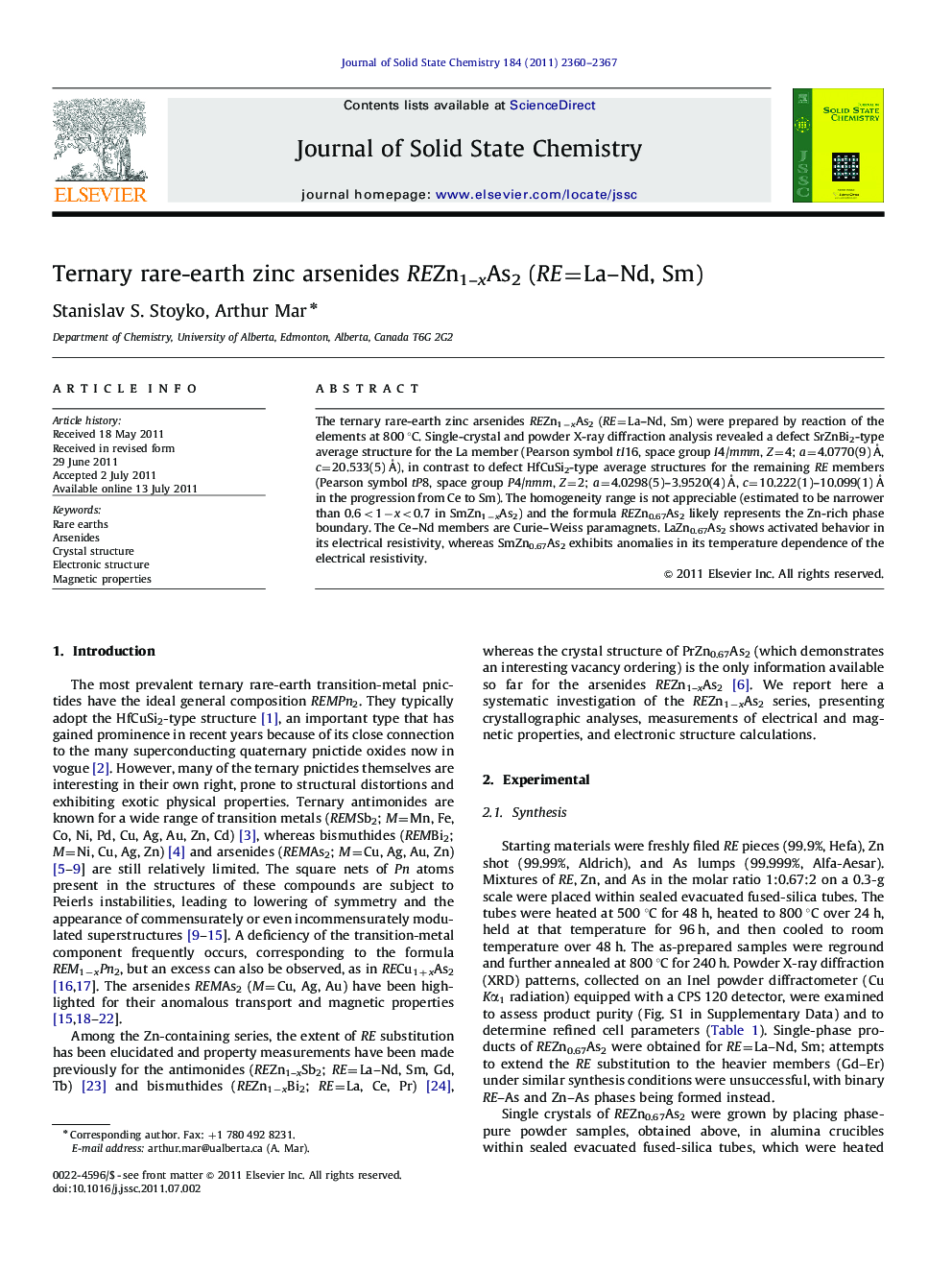| Article ID | Journal | Published Year | Pages | File Type |
|---|---|---|---|---|
| 1329065 | Journal of Solid State Chemistry | 2011 | 8 Pages |
The ternary rare-earth zinc arsenides REZn1−xAs2 (RE=La–Nd, Sm) were prepared by reaction of the elements at 800 °C. Single-crystal and powder X-ray diffraction analysis revealed a defect SrZnBi2-type average structure for the La member (Pearson symbol tI16, space group I4/mmm, Z=4; a=4.0770(9) Å, c=20.533(5) Å), in contrast to defect HfCuSi2-type average structures for the remaining RE members (Pearson symbol tP8, space group P4/nmm, Z=2; a=4.0298(5)–3.9520(4) Å, c=10.222(1)–10.099(1) Å in the progression from Ce to Sm). The homogeneity range is not appreciable (estimated to be narrower than 0.6<1−x<0.7 in SmZn1−xAs2) and the formula REZn0.67As2 likely represents the Zn-rich phase boundary. The Ce–Nd members are Curie–Weiss paramagnets. LaZn0.67As2 shows activated behavior in its electrical resistivity, whereas SmZn0.67As2 exhibits anomalies in its temperature dependence of the electrical resistivity.
Graphical abstractLaZn1−xAs2 adopts a SrZnBi2-type structure whereas the remaining members of the REZn1−xAs2 series (RE=Ce–Nd, Sm) adopt a HfCuSi2-type structure.Figure optionsDownload full-size imageDownload as PowerPoint slideHighlights► REZn1–xAs2 adopts SrZnBi2-type (RE=La) or HfCuSi2-type (RE=Ce–Nd, Sm) structures. ► Trends in RE substitution and local distortion around Zn-centered tetrahedra can be rationalized by geometrical factors. ► Zn vacancies occur to reduce Zn–As and As–As antibonding interactions.
